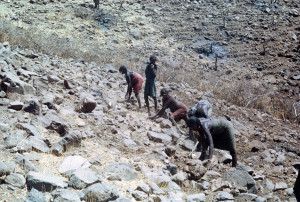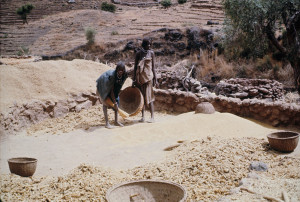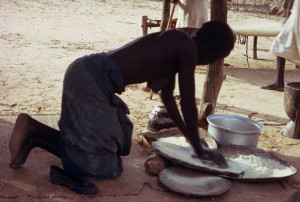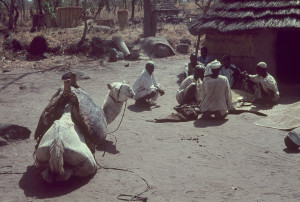Women clearing a hill slope for sowing millet (Fur: “sona”). Men and women have separate fields that they cultivate individually and store the yields in their separately owned granaries (Fur: “nonum”, Arabic: “Dabanga”).
Jebel Si area.
Photo: Gunnar Haaland, 1969



